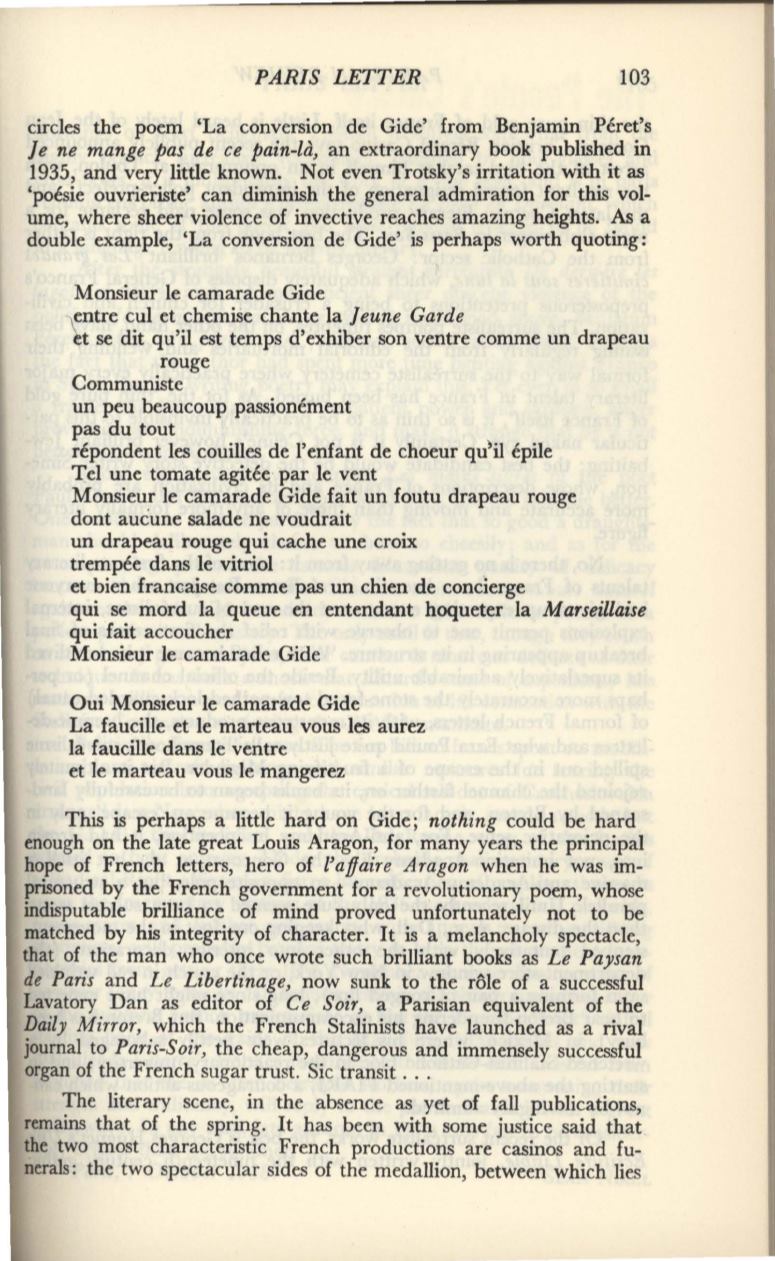
PARIS LETTER
103
circles the poem 'La conversion de Gide' from Benjamin Peret's
]e ne mange pas de ce pain-/a,
an extraordinary book published in
1935, and very little known. Not even Trotsky's irritation with it as
'poesie ouvrieriste' can diminish the general admiration for
this
vol–
ume, where sheer violence of invective reaches amazing heights.
As
a
double example, 'La conversion de Gide' is perhaps worth quoting:
Monsieur le camarade Gide
\ entre cul et chemiSe chante la
1
eune Garde
et se dit qu'il est temps d'exhiber son ventre comme un drapeau
rouge
Communistc
un peu beaucoup passionement
pas du tout
repondent les couilles de l'enfant de choeur qu)il epile
Tel une tomate agitee par le vent
Monsieur le camarade Gide fait un foutu drapeau rouge
dont aucune salade ne voudrait
un drapeau rouge qui cache une croix
trempee dans le vitriol
et bien francaise comme pas un chien de concierge
qui se mord la queue en entendant hoqueter la
Marseillaise
qui fait accoucher
Monsieur le camarade Gide
Oui Monsieur le camarade Gide
La faucille et le marteau vous les aurez
la faucille dans le ventre
et le marteau vous le mangerez
This is perhaps a little hard on Gide;
nothing
could be hard
enough on the late great Louis Aragon, for many years the principal
hope of French letters, hero of
['affaire Aragon
when he was
im–
prisoned by the French government for a revolutionary poem, whose
indisputable brilliance of mind proved unfortunately not to
be
matched by his integrity of character. It is a melancholy spectacle,
that of the man who once wrote such brilliant books as
Le Paysan
de Paris
and
Le Libertinage,
now sunk to the role of a successful
Lavatory Dan as editor of
Ce Soir,
a Parisian equivalent of the
Daily Mirror,
which the French Stalinists have launched as a rival
journal to
Paris-Soir,
the cheap, dangerous and immensely successful
organ of the French sugar trust. Sic transit ...
The literary scene, in the absence as yet of fall publications,
remains that of the spring. It has been with some justice said that
the two most characteristic French productions are casinos and fu–
nerals: the two spectacular sides of the medallion, between which lies


